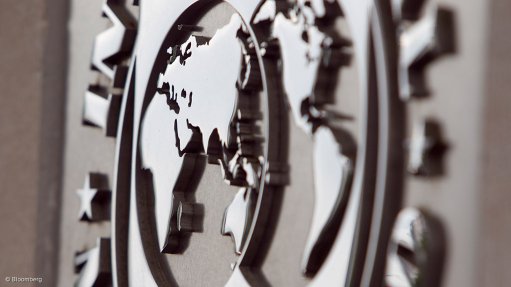
Photo by: Bloomberg
The International Monetary Fund (IMF) has welcomed Namibia’s fiscal year 2013/14 budget, which lays the groundwork for an active reform agenda in the area of reduced income taxation and improved public financial management and tax administration.
IMF mission chief Lamin Leigh said on the last day of a 15-day IMF mission to the country that the fund welcomed plans by the government to undertake a comprehensive review that aimed to improve the investment climate and the ease of doing business, support small- to medium-sized enterprises and pursue deeper economic integration.
This approach would require increasing the quality of public spending by reforming public financial management, improving the efficiency and effectiveness of the tax system, reducing the cost of doing business and diversifying the economy.
“The authorities’ increasing emphasis on efficiency and innovation-driven growth, underpinned by greater private-sector development to boost economy-wide productivity, is a step in the right direction.
“While the budget is fairly expansionary, total tax revenue collections, to date, have proven resilient and should help consolidate on the large gains made in the fiscal year 2012/13,” he commented.
With an uncertain external environment, the mission urged the Namibian government to begin rebuilding policy buffers, which should be pursued through a “growth-friendly” fiscal consolidation strategy, focusing on reining in current spending, such as current transfers and subsidies to State-owned enterprises (SOE), while preserving growth-promoting capital and infrastructure spending.
The fiscal consolidation process also needed to be balanced with a combination of expenditure-cutting measures and domestic revenue-mobilisation efforts.
“Thus, the mission welcomes the government’s commitment to a simplified income-tax system to achieve higher compliance and lower cost of administration. The mission supports the authorities’ ongoing work on broadening the tax base through rationalisation of existing tax incentives in some sectors,” Leigh commented.
He added that delivering good outcomes from the government’s diversification policies would require supportive measures to liberalise the service sectors, reduce the domestic regulatory burden on firms and address the skills mismatch in the labour market.
Citing further deductions of the IMF mission, Leigh said Namibia’s real gross domestic product had grown by a healthy 5% in 2012, while preliminary data for the first half of 2013 suggested that growth had moderated somewhat.
The slowdown reflected weak global demand for exports, which more than offset the solid growth in the nonmineral sector, most notably in retail trade.
At the end of August, inflation stood at 6%, broadly in line with inflation in South Africa.
“The fiscal outturn in the fiscal year 2012/13 was significantly better than targeted, with the budget almost balanced at the end of the fiscal year. The strong performance reflects both revenue over performance and some under-execution in capital spending,” Leigh held.
Looking ahead, the mission forecast that output growth would further moderate to about 4% in 2013.
Mineral exports would likely remain subdued in the second half of 2013 on account of weak external demand, with growth slowing in Namibia’s major trading-partner economies.
The impact of the drought this year would also likely weaken economic activity.
“These factors would be partly offset by strong domestic-demand growth emanating from the recent income-tax reform, along with the fiscal expansion targeted in the fiscal year 2013/14 budget,” he said.
The nonmineral sector, in particular construction, was also expected to further rebound in the second half of 2013, mainly on account of the development of the Husab uranium mine, in Namibia’s Erongo region, which was expected to become the second-largest uranium mine in the world.